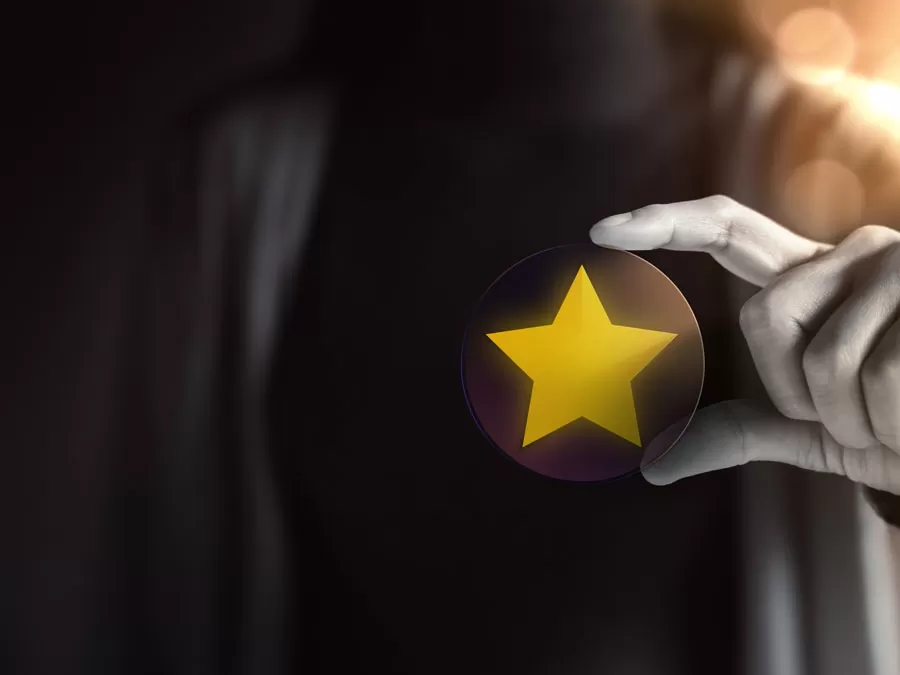Level up your capabilities by incorporating some fun into your team’s work! Here’s how you can leverage gamification in technical support.
Providing efficient and effective technical support to your customers is essential for maintaining their satisfaction and loyalty. However, traditional approaches may sometimes fall short in engaging both your customers and support agents. This is where the concept of gamification in technical support comes into play.
Today, we will explore the potential of gamification in delivering technical support and how it can benefit your business.
Understanding Gamification
Gamification in technical support involves applying game elements and mechanics to non-game situations to motivate and engage individuals. Through this practice, your organization can transform the support experience into an interactive journey for both customers and support agents.
For instance, the use of game elements such as challenges, rewards, and leaderboards can create a sense of achievement and excitement. This creates a positive and productive support environment.
Gamification has proven to be effective in various industries, from education to marketing. Hence, it goes without saying that tech support gamification allows you to tap into the inherent engagement it provides. This can lead to improved customer satisfaction, increased agent productivity, and a more collaborative work environment.
Benefits of Gamification in Technical Support
Gamification enhances engagement, motivation, and performance. If you gamify technical support, it can bring several benefits to both support agents and customers. Let’s explore these different advantages:
-
Increased Motivation and Engagement
Gamification techniques, such as points, badges, and leaderboards, tap into the natural human desire for achievement and recognition. Therefore, integrating these elements into technical support processes can help motivate support agents.
Meanwhile, the competitive aspect of leaderboards and the reward system of earning badges and points provide a sense of accomplishment. This will drive agents to perform at their best. As a result, support agents become more proactive, enthusiastic, and invested in delivering exceptional support experiences.
-
Improved Knowledge Retention and Skill Development
Tech support gamification can facilitate continuous learning and skill development among agents. Through interactive quizzes, training modules, and challenges, agents are encouraged to retain knowledge about the products or services they support.
In addition, learning environments that gamify technical support enable agents to apply their knowledge in simulated scenarios. This leads to increased expertise, better troubleshooting abilities, and ultimately, improved customer support outcomes.
-
Enhanced Collaboration and Knowledge Sharing
Gamification can foster a culture of collaboration and knowledge sharing among support agents. Team challenges or cooperative missions motivate support agents to work together, share insights, and leverage each other’s expertise.
This promotes a supportive and collaborative work environment where agents can learn from one another and solve complex issues collectively. In other words, gamification provides opportunities for agents to connect, communicate, and collaborate. This leads to a stronger collective knowledge base for the support team.
-
Faster Issue Resolution and Reduced Wait Times
Gamification can optimize support processes and lead to faster issue resolution. More specifically, time-based challenges or response targets incentivize agents to address customer inquiries promptly. This reduces customer wait times, increases customer satisfaction, and improves overall support efficiency.
Tech support gamification can also help identify bottlenecks or areas that require process improvement. This will enable your organization to streamline your support operations and achieve faster resolution times.
-
Increased Customer Satisfaction and Loyalty
Gamification has the potential to significantly enhance the customer support experience. When interactions are more enjoyable and interactive, both customer satisfaction and customer loyalty increase.
Engaging elements such as progress bars, visual feedback, and interactive displays create a more immersive and enjoyable support experience. When customers have positive and engaging interactions with support agents, they are more likely to feel valued and develop a strong connection with the brand.
-
Data-Driven Insights for Continuous Improvement
Gamification in technical support provides valuable data and insights that can be leveraged for continuous improvement. Tracking and analyzing game metrics such as completion rates and engagement levels helps your organization identify areas of improvement.
These insights can inform training programs, process optimizations, and the development of new gamification strategies. Continuously refining your organization’s gamified support will aid in enhancing the effectiveness and impact of your operations.
Gamification Elements and Techniques for Technical Support
To successfully implement gamification in your technical support processes, it is essential to utilize various elements and techniques:
-
Setting Clear Goals and Objectives
Setting clear goals and objectives is crucial as it provides a sense of direction and purpose for both agents and customers. Defining specific targets, such as response time or customer satisfaction ratings creates a framework for gamification in technical support.
-
Creating Engaging Challenges and Missions
Creating engaging challenges and missions is another key aspect. These challenges should be designed to align with your support objectives and customer needs. They can range from solving complex technical puzzles to providing exceptional customer service in a simulated environment.
These challenges should be tailored to suit different skill levels and should gradually increase in difficulty to motivate support agents.
-
Incorporating Rewards and Recognition Systems
Incorporating rewards and recognition systems is fundamental in tech support gamification. Rewards can take the form of virtual badges, points, or even tangible incentives like gift cards or bonuses. Recognition for achievements, whether through leaderboards or public acknowledgments, creates a healthy sense of competition.
-
Implementing Progress Tracking and Leaderboards
Implementing progress tracking and leaderboards allows agents to monitor their individual performance and compare it with their peers. Visualizing progress in real-time creates a sense of accomplishment and encourages agents to strive for continuous improvement. Leaderboards further motivate agents to excel and drive healthy competition among team members.
Overcoming Implementation Challenges in Gamification
While gamification in technical support holds tremendous potential, it is crucial to be aware of challenges and address them proactively.
-
Employee Engagement and Buy-In
Encouraging support agents to embrace gamification in technical support can encounter resistance. Overcoming this challenge involves creating a culture of engagement and obtaining buy-in from your team.
Communicate the advantages clearly, illustrating how gamification in technical support can enhance their work experience. Let your team know that gamification can contribute to personal and professional growth.
-
Designing Engaging Gamified Elements
Crafting gamified technical support elements that captivate and motivate support agents requires thoughtful design. Challenges may arise in developing activities that align with technical support tasks while keeping agents engaged. Collaborate with your team to brainstorm ideas that strike a balance between fun and productivity.
-
Balancing Competition and Collaboration
Tech support gamification often introduces competitive elements, but maintaining a healthy balance between competition and collaboration is essential. Too much competition may lead to a stressful environment, while too little can diminish the motivational aspect. Find the sweet spot where agents are inspired to excel individually while maintaining a collaborative team spirit.
-
Data Security Concerns
Incorporating gamification in tech support may involve collecting and analyzing data related to support activities. Therefore, addressing data security concerns is highly important. Ensure that your tech support gamification platform adheres to robust security protocols. This will assure both customers and agents that their information is handled with the utmost confidentiality.
-
Sustaining Long-Term Motivation
Keeping support agents motivated through gamification in technical support requires ongoing effort. The initial enthusiasm may wane over time, and challenges may arise in sustaining long-term engagement. To address this, implement a strategy for periodic updates, introducing new challenges, rewards, and recognition to keep the momentum alive.
-
Measuring and Analyzing Impact
Effective monitoring and evaluation are crucial components of successful tech support gamification. Challenges may arise in accurately measuring the impact on customer satisfaction, agent performance, and overall support outcomes. Implement comprehensive analytics tools and regularly review the data to make informed decisions.
Best Practices for Tech Support Gamification
When implementing gamification in technical support, it is essential to follow best practices to maximize its effectiveness. In addition, gamification can ensure a positive impact on both support agents and customers. Here are some key best practices to consider:
-
Define Clear Objectives
Clearly define why you gamify technical support processes. Determine the specific outcomes you aim to achieve, such as improving agent performance, increasing customer satisfaction, or reducing resolution times. Aligning gamification efforts with specific goals allows for a focused and purposeful implementation.
-
Understand the Target Audience
Gain a deep understanding of your support agents and customers. Identify their preferences, motivations, and pain points. This understanding will help in designing gamification elements that resonate with them and drive engagement. Tailoring the gamification experience to match the preferences of your target audience enhances its effectiveness.
-
Select Relevant Game Mechanics
Choose game mechanics that align with the goals of your technical support operations. Consider mechanics such as points, badges, levels, leaderboards, challenges, and rewards. Also, each mechanic should serve a specific purpose. Ensure that the selected mechanics contribute to the overall objectives and create a meaningful gamification experience.
-
Provide Real-Time Feedback
Offer real-time feedback to support agents during gamified interactions. Immediate feedback allows agents to understand their performance, identify areas for improvement, and adjust their approach accordingly. Positive reinforcement, constructive feedback, and performance analytics help agents stay engaged and motivated, enabling continuous learning and growth.
-
Balance Competition and Collaboration
Strike a balance between competition and collaboration in tech support gamification. While healthy competition can drive performance, excessive focus on individual rankings may hinder collaboration and knowledge sharing. Introduce team-based challenges or collaborative missions to encourage teamwork.
-
Align with Training and Development
Integrate gamification with training and development programs. Combine gamified learning modules with technical training to enhance knowledge acquisition and retention. Incorporate quizzes, simulations, and interactive challenges to reinforce learning and provide opportunities for skill development.
-
Promote Continuous Improvement
Regularly review and analyze gamification data to identify areas for improvement. Use analytics to measure the effectiveness of gamification elements, track agent performance, and evaluate customer satisfaction. Leverage these insights to fine-tune gamification strategies, optimize support processes, and introduce improvements.
-
Keep the Experience Engaging and Varied
Design gamification experiences that are immersive, enjoyable, and varied. Introduce different types of challenges, quests, or missions to motivate support agents. Incorporate elements such as visual feedback and progress bars to enhance the overall experience. Finally, regularly update and refresh gamification elements to prevent monotony.
-
Recognize and Reward Achievements
Implement a rewards system to recognize agent achievements. Provide tangible incentives such as bonuses, gift cards, or additional time off for exceptional performance. You can also publicly acknowledge top performers through leaderboards or internal communication channels.
-
Continuously Communicate the Value
Consistently communicate the value and benefits of gamification to motivate support agents and stakeholders. Highlight how gamification enhances their performance, improves customer satisfaction, and contributes to the overall success of the organization. In doing so, you can generate buy-in, maintain enthusiasm, and ensure long-term commitment.
Teaming Up with an Outsourcing Firm
Outsourcing technical support to a company with a gamified culture can bring several benefits to your business. Here are some key advantages to consider:
-
Enhanced Customer Experience
When you outsource to a company who can gamify tech support, you can expect an enhanced customer experience. The gamification elements incorporated into their support processes make interactions more engaging, interactive, and enjoyable for your customers. This can lead to increased customer satisfaction, improved brand perception, and enhanced customer loyalty.
Customers are more likely to remember positive support experiences, which can translate into repeat business and positive word-of-mouth recommendations.
-
Increased Efficiency and Productivity
A gamified culture promotes a sense of competition and achievement among support agents. Partnering with an outsourcing tech support company allows you to leverage their strategies for gamification in technical support.
The use of challenges, leaderboards, and rewards can motivate support agents to complete tasks efficiently and provide timely solutions. This can result in faster response times, reduced resolution times, and increased customer satisfaction.
-
Improved Agent Morale and Retention
Gamification techniques create a fun and engaging work environment for support agents. Outsourcing to a company with tech support gamification provides your agents with a more enjoyable and rewarding experience. This can have a positive impact on their morale, job satisfaction, and overall engagement.
When agents are happy and motivated, they are more likely to deliver high-quality support and stay longer with the company. In addition, reduced attrition rates mean that you can maintain a skilled and experienced support team. This leads to consistent and reliable support for your customers.
-
Access to Specialized Expertise
When you outsource to a company with tech support gamification, you gain access to a pool of specialized expertise. These companies invest in training their support agents in the latest technologies and best practices. This means they are equipped to handle a wide range of technical issues and can provide effective solutions.
In partnering with a specialized provider, you can ensure that your customers receive top-notch assistance, even for complex problems.
-
Cost Savings and Scalability
Outsourcing tech support can result in significant cost savings for your business. A company that has already invested in gamified support infrastructure helps avoid the expenses of building and maintaining an in-house team.
Additionally, outsourcing allows for scalability, as the external company can quickly adapt to handle fluctuations in support demands. Whether you need support during peak seasons or when launching new products, the outsourced team can efficiently scale up or down as required.
-
Focus on Core Competencies
Outsourcing to a company that practices tech support gamification enables you to focus on your core competencies. Entrusting this technical support function to a specialized provider frees up internal resources. As a result, you can dedicate more time and effort to areas that directly impact your business growth and profitability.
Conclusion
In conclusion, tech support gamification can revolutionize the way you engage customers and empower your agents. Through game elements, you can enhance customer satisfaction, motivate support agents, and create a positive and collaborative work environment.
Gamification is only one of many strategies companies may use to boost productivity and service quality while engaging and rewarding the workforce. Outsourcing multilingual support brand Open Access BPO has various strategies for empowering its people and solidifying brand loyalty for our partners.
Let us devise an outsourcing solution that fits your goals, needs, customer demands, and budget. Contact us and speak to our program development experts today.
We all know the benefits of injecting fun in the workplace.
When employees don’t just see their tasks as duties, they need to accomplish but rather rewarding activities they enjoy, they become more efficient, productive, and satisfied. Making the workplace fun makes the workers happy. And when employees are happy, they get to serve customers better.
This is why many companies that provide technical support embrace gamification in their workflow and system. They make it happen by applying gaming aspects into the customer support software, metrics system, and performance evaluations.
Gamification often involves an awarding scheme that turns accomplishments into points, which make workers eligible for rewards if accumulated.
Gamification claims to lighten stressful jobs, but is this truly helpful in the help desk setting?
Understanding Gamification
Gamification involves applying game elements and mechanics to non-game situations to motivate and engage individuals. By leveraging the principles of gamification, businesses can transform the support experience into an interactive and enjoyable journey for both customers and support agents.
The use of game elements such as challenges, rewards, leaderboards, and progress tracking can create a sense of achievement and excitement, fostering a positive and productive support environment.
Gamification has proven to be effective in various industries, from education to marketing. By incorporating gamified elements into your technical support processes, you can tap into the inherent motivation and engagement that games provide. This can lead to improved customer satisfaction, increased agent productivity, and a more collaborative work environment.
Benefits of Gamification in Technical Support
Gamification is the incorporation of game elements and mechanics into non-game contexts to enhance engagement, motivation, and performance. When applied to technical support, gamification can bring several benefits to both support agents and customers. Let’s explore the different advantages of gamification in technical support:
-
Increased Motivation and Engagement
Gamification techniques, such as points, badges, and leaderboards, tap into the natural human desire for achievement and recognition. By integrating these elements into technical support processes, gamification boosts the motivation and engagement of support agents.
The competitive aspect of leaderboards and the reward system of earning badges and points provide a sense of accomplishment, driving agents to perform at their best. As a result, support agents become more proactive, enthusiastic, and invested in delivering exceptional support experiences.
-
Improved Knowledge Retention and Skill Development
Gamification can facilitate continuous learning and skill development among support agents. Through interactive quizzes, training modules, and challenges, agents are encouraged to acquire and retain knowledge about the products or services they support.
Gamified learning environments create a safe space for agents to experiment, practice problem-solving, and apply their knowledge in simulated scenarios. This leads to increased expertise, better troubleshooting abilities, and ultimately, improved customer support outcomes.
-
Enhanced Collaboration and Knowledge Sharing
Gamification can foster a culture of collaboration and knowledge sharing among support agents. By introducing team challenges or cooperative missions, agents are encouraged to work together, share insights, and leverage each other’s expertise. This promotes a supportive and collaborative work environment where agents can learn from one another, solve complex issues collectively, and improve overall team performance.
Gamification provides opportunities for agents to connect, communicate, and collaborate, strengthening the collective knowledge base of the support team.
-
Faster Issue Resolution and Reduced Wait Times
Gamification can optimize support processes and lead to faster issue resolution. By implementing time-based challenges or response targets, agents are incentivized to address customer inquiries promptly. This reduces customer wait times, increases customer satisfaction, and improves overall support efficiency.
Gamification elements can also help identify bottlenecks or areas that require process improvement, enabling organizations to streamline their support operations and achieve faster resolution times.
-
Increased Customer Satisfaction and Loyalty
Gamification has the potential to significantly enhance the customer support experience. By making interactions more enjoyable and interactive, gamified support processes can increase customer satisfaction and build customer loyalty.
Engaging elements such as progress bars, visual feedback, and interactive interfaces create a more immersive and enjoyable support experience. When customers have positive and engaging interactions with support agents, they are more likely to feel valued and develop a strong connection with the brand.
-
Data-Driven Insights for Continuous Improvement
Gamification provides valuable data and insights that can be leveraged for continuous improvement. By tracking and analyzing game metrics, such as completion rates, success rates, and engagement levels, organizations can identify areas of improvement in their support processes.
These insights can inform training programs, process optimizations, and the development of new gamification strategies. By continuously iterating and refining gamified support processes based on data-driven insights, organizations can enhance the effectiveness and impact of their technical support operations.
Gamification Elements and Techniques for Technical Support
To successfully implement gamification in your technical support processes, it’s essential to utilize various elements and techniques.
- Setting clear goals and objectives is crucial as it provides a sense of direction and purpose for both agents and customers. By defining specific targets, such as response time or customer satisfaction ratings, you create a framework for gamification.
- Creating engaging challenges and missions is another key aspect. These challenges should be designed to align with your support objectives and customer needs. They can range from solving complex technical puzzles to providing exceptional customer service in a simulated environment.
These challenges should be tailored to suit different skill levels and should gradually increase in difficulty to keep agents motivated and continuously learning.
- Incorporating rewards and recognition systems is fundamental in gamification. Rewards can take the form of virtual badges, points, or even tangible incentives like gift cards or bonuses. Recognition for achievements, whether through leaderboards or public acknowledgments, boosts agents’ motivation and creates a healthy sense of competition.
- Implementing progress tracking and leaderboards allows agents to monitor their individual performance and compare it with their peers. Visualizing progress in real-time creates a sense of accomplishment and encourages agents to strive for continuous improvement. Leaderboards further motivate agents to excel and drive healthy competition among team members.
Overcoming Implementation Challenges
While gamification holds tremendous potential for delivering technical support, it is crucial to be aware of potential challenges and address them proactively.
Resistance to change is a common obstacle when introducing gamified elements. To overcome this, involve your support agents in the process, communicate the benefits clearly, and provide comprehensive training and onboarding programs.
Monitoring and evaluation of the gamified support processes are vital to ensure effectiveness. Regularly assess the impact of gamification on customer satisfaction, agent performance, and overall support outcomes. Use customer feedback and agent input to fine-tune and improve your gamification strategies.
Gamification Best Practices
When implementing gamification in technical support, it is essential to follow best practices to maximize its effectiveness and ensure a positive impact on both support agents and customers. Here are some key best practices to consider:
-
Define Clear Objectives
Clearly define the objectives of gamifying your technical support processes. Determine the specific outcomes you aim to achieve, such as improving agent performance, increasing customer satisfaction, or reducing resolution times. Aligning gamification efforts with specific goals allows for a focused and purposeful implementation.
-
Understand the Target Audience
Gain a deep understanding of your support agents and customers. Identify their preferences, motivations, and pain points. This understanding will help in designing gamification elements that resonate with them and drive engagement. Tailoring the gamification experience to match the preferences of your target audience enhances its effectiveness.
-
Select Relevant Game Mechanics
Choose game mechanics that align with the goals of your technical support operations. Consider mechanics such as points, badges, levels, leaderboards, challenges, and rewards.
Each mechanic should serve a specific purpose, such as incentivizing specific behaviors, fostering collaboration, or recognizing achievements. Ensure that the selected mechanics contribute to the overall objectives and create a meaningful gamification experience.
-
Provide Real-Time Feedback
Offer real-time feedback to support agents during gamified interactions. Immediate feedback allows agents to understand their performance, identify areas for improvement, and adjust their approach accordingly. Positive reinforcement, constructive feedback, and performance analytics help agents stay engaged and motivated, enabling continuous learning and growth.
-
Balance Competition and Collaboration
Strike a balance between competition and collaboration in gamified support processes. While healthy competition can drive performance, excessive focus on individual rankings may hinder collaboration and knowledge sharing. Introduce team-based challenges or collaborative missions to encourage teamwork, foster knowledge exchange, and promote a supportive work culture.
-
Align with Training and Development
Integrate gamification with training and development programs. Combine gamified learning modules with technical training to enhance knowledge acquisition and retention. Incorporate quizzes, simulations, and interactive challenges to reinforce learning and provide opportunities for skill development. The alignment of gamification with training initiatives ensures a holistic approach to agent development.
-
Promote Continuous Improvement
Regularly review and analyze gamification data to identify areas for improvement. Use analytics to measure the effectiveness of gamification elements, track agent performance, and evaluate customer satisfaction.
Leverage these insights to fine-tune gamification strategies, optimize support processes, and introduce iterative improvements. Continuous improvement ensures that gamification remains relevant and impactful over time.
-
Keep the Experience Engaging and Varied
Design gamification experiences that are immersive, enjoyable, and varied. Introduce different types of challenges, quests, or missions to keep agents engaged and motivated. Incorporate elements such as visual feedback, progress bars, and interactive interfaces to enhance the overall experience. Regularly update and refresh gamification elements to prevent monotony and sustain agent engagement.
-
Recognize and Reward Achievements
Implement a robust rewards system to recognize and reward agent achievements. Provide tangible incentives such as bonuses, gift cards, or additional time off for exceptional performance. Publicly acknowledge top performers through leaderboards or internal communication channels. Celebrating achievements creates a positive work environment and motivates agents to strive for excellence.
-
Continuously Communicate the Value
Consistently communicate the value and benefits of gamification to support agents and stakeholders. Highlight how gamification enhances their performance, improves customer satisfaction, and contributes to the overall success of the organization. By promoting the value of gamification, you can generate buy-in, maintain enthusiasm, and ensure long-term commitment.
By following these best practices, businesses can effectively implement gamification in their technical support operations. This approach fosters agent engagement, improves performance, enhances customer experiences, and ultimately drives business success.
Future Trends
As technology continues to evolve, so does the potential for gamification in technical support. Emerging technologies such as AI and machine learning offer exciting possibilities for personalized and adaptive gamified support experiences.
However, it’s essential to consider the ethical implications of gamification and ensure that the focus remains on enhancing customer satisfaction and agent performance.
Team Up With an Outsourcing Firm For Your Tech Support Needs
Outsourcing technical support to a company with a gamified culture can bring several benefits to your business. Here are some key advantages to consider:
-
Enhanced Customer Experience
When you outsource tech support to a company with a gamified culture, you can expect an enhanced customer experience. The gamification elements incorporated into their support processes make interactions more engaging, interactive, and enjoyable for your customers. This can lead to increased customer satisfaction, improved brand perception, and enhanced customer loyalty.
Customers are more likely to remember positive support experiences, which can translate into repeat business and positive word-of-mouth recommendations.
-
Increased Efficiency and Productivity
A gamified culture promotes a sense of competition and achievement among support agents. By outsourcing tech support to such a company, you can leverage their gamification strategies to boost the efficiency and productivity of your support team.
The use of challenges, leaderboards, and rewards can motivate agents to complete tasks efficiently and provide timely solutions. This can result in faster response times, reduced resolution times, and increased customer satisfaction.
-
Improved Agent Morale and Retention
Gamification techniques create a fun and engaging work environment for support agents. By outsourcing tech support to a company with a gamified culture, you provide your agents with a more enjoyable and rewarding experience. This can have a positive impact on their morale, job satisfaction, and overall engagement.
When agents are happy and motivated, they are more likely to deliver high-quality support and stay with the company for longer durations. Reduced attrition rates mean that you can maintain a skilled and experienced support team, leading to consistent and reliable support for your customers.
-
Access to Specialized Expertise
When you outsource tech support to a company with a gamified culture, you gain access to a pool of specialized expertise. These companies invest in training their support agents in the latest technologies and best practices. They are equipped to handle a wide range of technical issues and have the necessary knowledge and experience to provide effective solutions.
By partnering with a specialized tech support provider, you can ensure that your customers receive top-notch assistance, even for complex technical problems.
-
Cost Savings and Scalability
Outsourcing tech support can result in significant cost savings for your business. By partnering with a company that has already invested in gamified support infrastructure, you can avoid the expenses associated with building and maintaining an in-house support team.
Additionally, outsourcing allows for scalability, as the external company can quickly adapt to handle fluctuations in support demands. Whether you need support during peak seasons or when launching new products, the outsourced team can efficiently scale up or down as required.
-
Focus on Core Competencies
Outsourcing tech support enables you to focus on your core competencies and strategic initiatives.
By entrusting the technical support function to a specialized provider, you free up internal resources and can dedicate more time and effort to areas that directly impact your business growth and profitability. This allows you to leverage your expertise in other critical areas such as product development, marketing, and customer acquisition.
Integrating gamification into your technical support processes can revolutionize the way you engage customers and empower your support agents. By leveraging game elements, you can enhance customer satisfaction, boost agent productivity, and foster a positive and collaborative work environment.
Embrace the power of gamification and unlock the full potential of your technical support operations.
Gamification is only one of many strategies companies may use to boost productivity and service quality while engaging and rewarding the workforce. Outsourcing multilingual support brand Open Access BPO has various strategies for empowering its people and solidifying brand loyalty for our partners.
Let us devise an outsourcing solution that fits your goals, needs, customer demands, and budget. Contact us and speak to our program development experts today.












